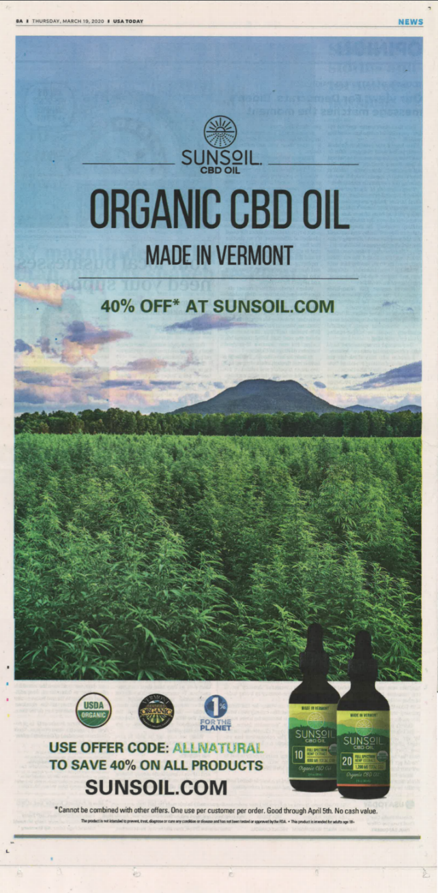CANNABIDIOL (CBD): WHAT CONSUMERS NEED TO KNOW
Christopher Froehlich, Catherine J Randall Research Scholar, The University of Alabama
Alan Blum, MD, The University of Alabama Center for the Study of Tobacco and Society

Christopher Froehlich, Catherine J Randall Research Scholar, The University of Alabama
Alan Blum, MD, The University of Alabama Center for the Study of Tobacco and Society

Cannabidiol (CBD) is one of the two main chemical components of marijuana, a plant that contains more than 100 identified compounds. Unlike its psychoactive counterpart, delta-9-tetrahydrocannabinol (THC), CBD does not cause a “high”. Popular demand for CBD-containing products has been driven by personal testimonies on social media attesting to the chemical’s usefulness in treating pain, anxiety, depression, cancer-related symptoms, high blood pressure, and neurological conditions, starting around 2018.1 The increasing variety of CBD products includes lotions and bath bombs for skin care, oils and creams for pain, tinctures for anxiety, and gummies for relaxation. In this same time period, cases of electronic vaporizer related lung illnesses appeared. Many of the illnesses involved products containing THC or CBD (e-cannabis). This poster is a companion to Myths and Realities of Medical Marijuana (link).
| Cognitive deficits remain days after use 7 | Not psychoactive7 |
| Extracts not FDA approved. Synthetic forms are 8 | FDA approved to treat some types of epilepsy 8 |
| Neuropathic/palliative pain, CINV, spasticity in MS/SCI 7 | Neuropathic/palliative pain, spasticity in MS/SCI 7 |
CINV= Chemotherapy induced nausea and vomiting. MS= Multiple Sclerosis. SCI= Spinal Cord Injury

This full-page ad with 40% off coupon code for CBD oil appeared in USA Today
An article from the United States Food and Drug Administration on its efforts to curtail illegal sales of CBD products, fda.gov, November 25, 2019
Industry Value: Consumer sales of CBD products in the US are projected to reach $1.8 billion by 2022, up from $500 million in 2018. By 2025, the industry is projected to be worth $23 billion. 12

This business advertises CBD manicures and pedicures, with a student discount, on Tuscaloosa Transit Authority busses.

Lung Illnesses: THC was found in 75% of products used by patients with EVALI and 94% of patients. Vitamin E acetate, which may cause toxicity in high concentrations, was found in 94% of patients. CBD was not consistently found. Until more is known about these illnesses, the CDC recommends avoiding THC-containing e-cigarettes and unlicensed tobacco-containing e-cigarettes. 18

CVS’s website sells CBD products in its personal care department’s alternative care section. At the top of the webpage, the company lists states that products can be shipped to and provides a link to information about third party testing of CBD products.
One of the two CBD stores in Johnston, RI, placed an ad for free CBD samples at this bus stop, outside a dollar store and discount grocery store.
This stand at Baltimore Washington International Airport sells CBD lotions, muscle and joint creams, lip balms, face masks, and more.
Although there appear to be risks associated with the vaping of CBD, the topical use of CBD and the ingestion of CBD-containing products appear to be safe. The biggest risk facing consumers may be spending money on products that do not provide the health benefits touted by manufacturers.
Alan Blum, M.D., Director
205-348-2886
ablum@ua.edu
© Copyright - The Center for the Study of Tobacco and Society
This website uses cookies to collect information to improve your browsing experience. Please review our Privacy Statement for more information.
